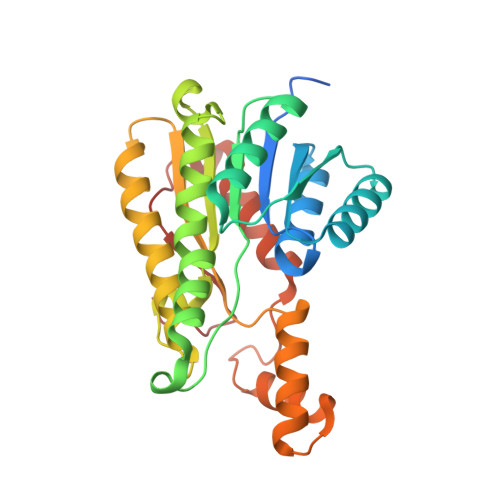The Crystal Structure of the Actiii Actinorhodin Polyketide Reductase; Proposed Mechanism for Acp and Polyketide Binding
Hadfield, A.T., Limpkin, C., Teartasin, W., Simpson, T.J., Crosby, J., Crump, M.P.(2004) Structure 12: 1865
- PubMed: 15458634
- DOI: https://doi.org/10.1016/j.str.2004.08.002
- Primary Citation of Related Structures:
1W4Z - PubMed Abstract:
We have determined the 2.5 angstroms crystal structure of an active, tetrameric Streptomyces coelicolor type II polyketide ketoreductase (actIII) with its bound cofactor, NADP+. This structure shows a Rossman dinucleotide binding fold characteristic of SDR enzymes. Of two subunits in the crystallographic asymmetric unit, one is closed around the active site. Formate is observed in the open subunit, indicating possible carbonyl binding sites of the polyketide intermediate. Unlike previous models we observe crystal contacts that may mimic the KR-ACP interactions that may drive active site opening. Based on these observations, we have constructed a model for ACP and polyketide binding. We propose that binding of ACP triggers a conformational change from the closed to the open, active form of the enzyme. The polyketide chain enters the active site and reduction occurs. The model also suggests a general mechanism for ACP recognition which is applicable to a range of protein families.
Organizational Affiliation:
Department of Biochemistry, University of Bristol, School of Medical Sciences, University Walk, Bristol, BS8 1TD, United Kingdom. [email protected]
















